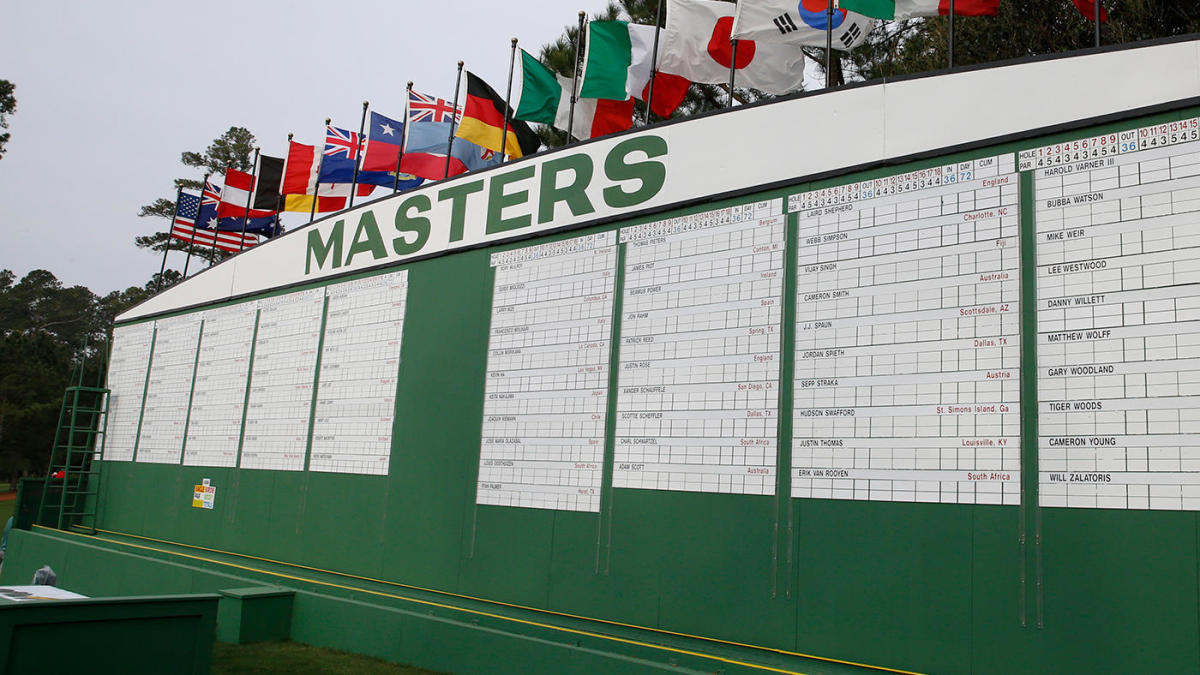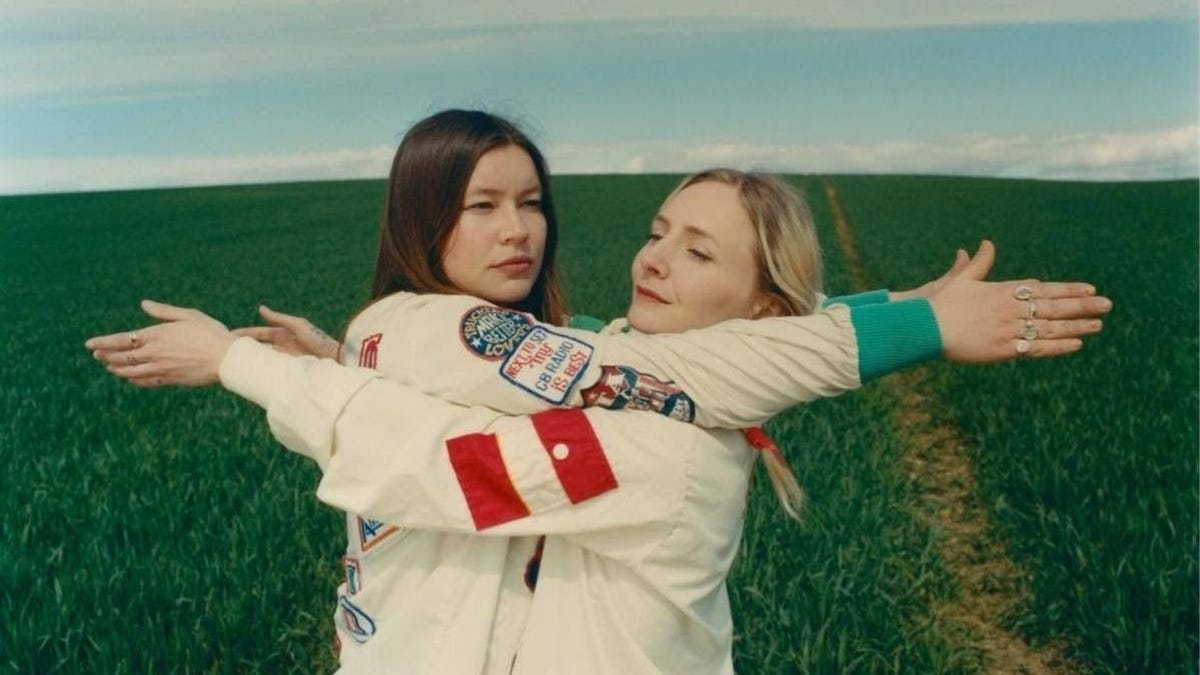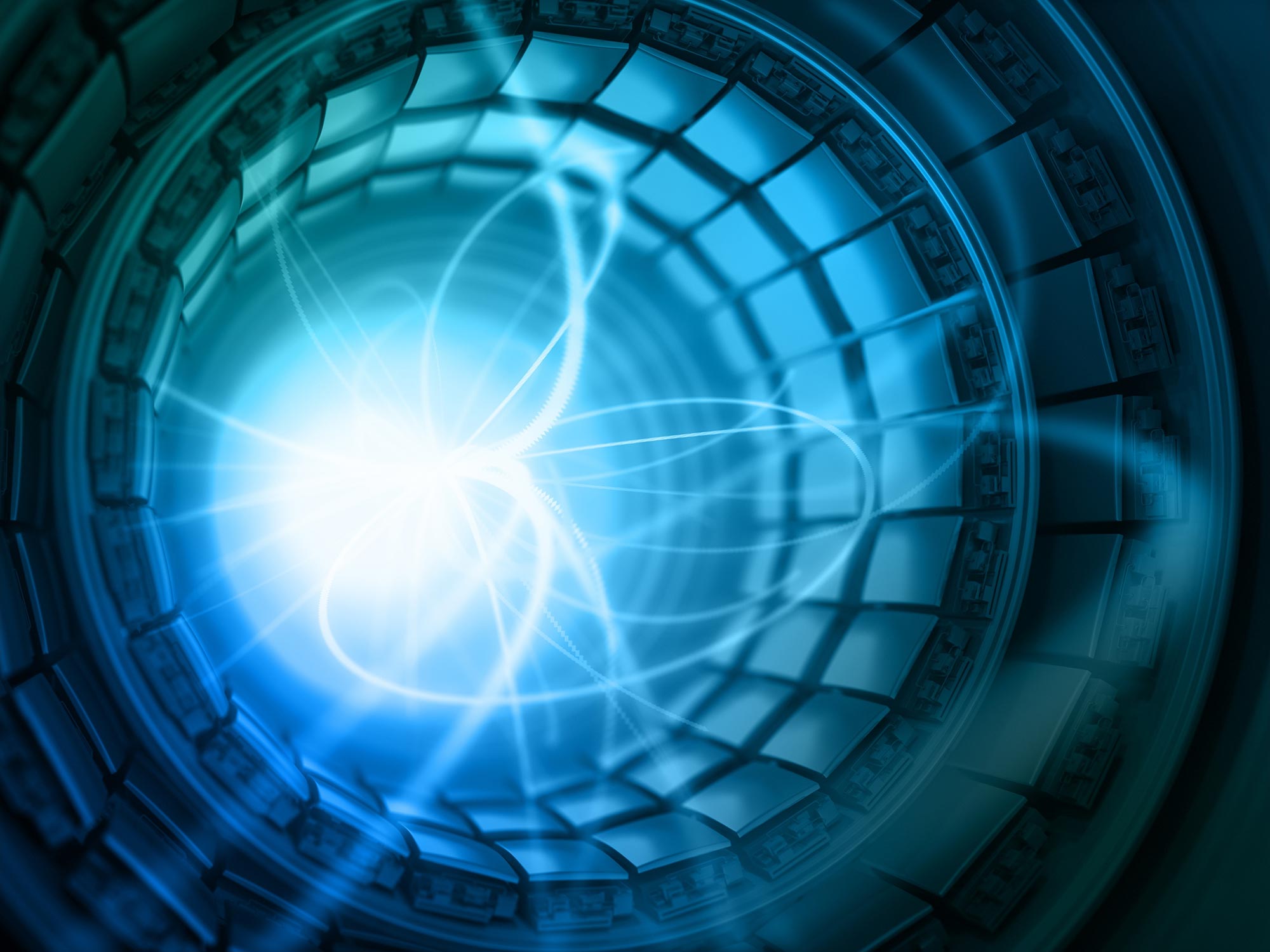
La misurazione più accurata in assoluto della massa del bosone W mostra la tensione con il Modello Standard.
Dopo 10 anni di attenta analisi e controllo, gli scienziati della CDF presso il Fermi National Accelerator Laboratory del Dipartimento dell’Energia degli Stati Uniti hanno annunciato il 7 aprile 2022 di aver ottenuto la misurazione più accurata mai realizzata della massa del bosone W, una delle forze della natura- particelle che trasportano. Utilizzando i dati raccolti dal Collider Detector del Fermilab, o CDF, gli scienziati hanno ora determinato la massa della particella con un’accuratezza dello 0,01%, il doppio della precisione della migliore misurazione precedente. Corrisponde a un gorilla che pesa da 800 libbre a 1,5 once.
La nuova bilancia di precisione pubblicata sulla rivista sapere, consente agli scienziati di testare il modello standard della fisica delle particelle, il quadro teorico che descrive la natura al suo livello più elementare. Il risultato: il nuovo valore di massa mostra una tensione con il valore che gli scienziati ottengono utilizzando input sperimentali e teorici nel contesto del modello standard.
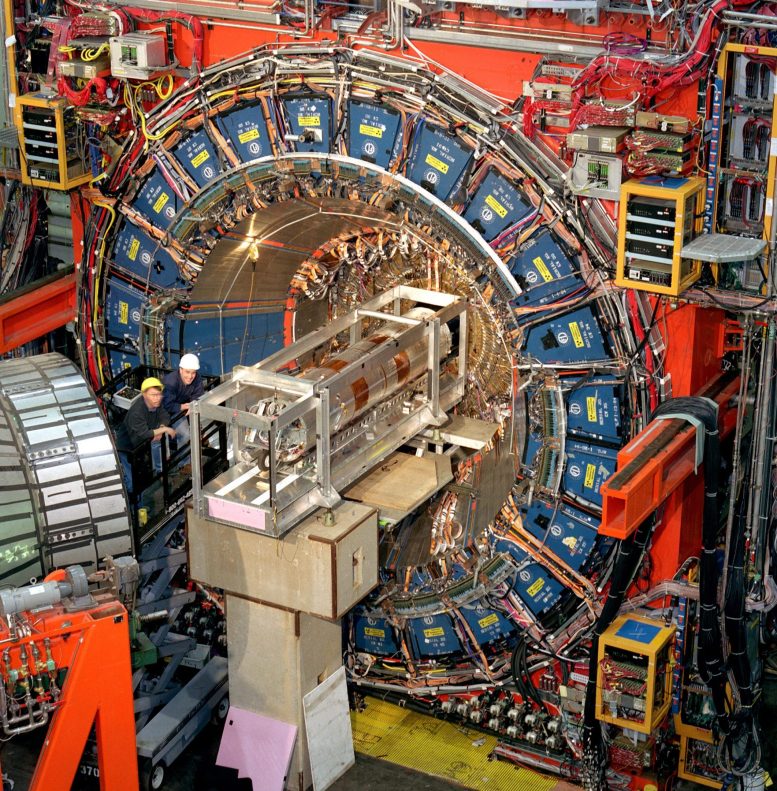
Il rilevatore di collisioni Fermilab ha registrato le collisioni di particelle ad alta energia generate dal Tevatron Collider dal 1985 al 2011. Circa 400 scienziati di 54 istituzioni in 23 paesi stanno ancora lavorando sulla ricchezza di dati raccolti dall’esperimento. Credito: Fermilab
“Il numero di miglioramenti e ulteriori convalide che sono stati apportati ai nostri risultati è enorme”, ha affermato Ashutosh V. Kotwal della Duke University, che ha condotto questa analisi ed è uno dei 400 scienziati della collaborazione CDF. “Abbiamo preso in considerazione la nostra migliore comprensione del nostro rivelatore di particelle, nonché i progressi nella comprensione teorica e sperimentale delle interazioni del bosone W con altre particelle. Quando alla fine abbiamo rivelato il risultato, abbiamo scoperto che differiva dalla previsione del modello standard. “
Se confermata, tale misurazione indica la potenziale necessità di miglioramenti a scapito del Modello Standard o di estensioni del Modello.
Gli scienziati hanno ora determinato la massa del bosone W con una precisione dello 0,01%. Questa è il doppio della precisione della migliore misurazione precedente e mostra la tensione con il modello standard.
Il nuovo valore è coerente con molte precedenti misurazioni della massa del bosone W, ma ci sono anche alcune differenze. Saranno necessarie misurazioni future per fare più luce sul risultato.
“Anche se questo è un risultato interessante, la misurazione deve essere confermata da un altro esperimento prima che possa essere completamente spiegata”, ha affermato il vicedirettore del Fermilab Joe Lykken.
Il bosone W è una particella messaggera della forza nucleare debole. È responsabile dei processi nucleari che fanno brillare il sole e le molecole decadono. Utilizzando collisioni di particelle ad alta energia dal collisore Tevatron al Fermilab, la collaborazione CDF ha raccolto enormi quantità di dati contenenti bosoni W dal 1985 al 2011.
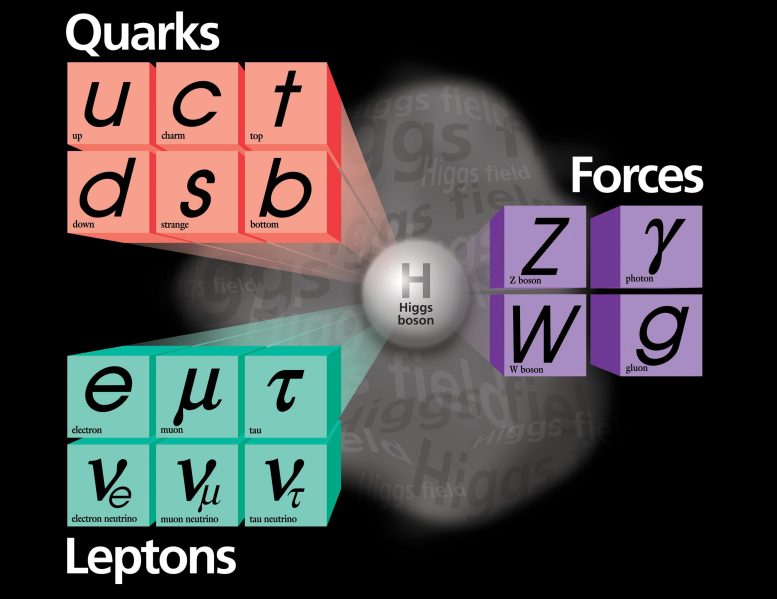
Il bosone W è la particella messaggera della forza nucleare debole. È responsabile dei processi nucleari che fanno brillare il sole e le molecole decadono. Gli scienziati della CDF stanno studiando le proprietà del bosone W utilizzando i dati raccolti al Tevatron Collider del Fermilab. Crediti: Laboratorio Nazionale Acceleratori Fermi
Il fisico della CDF Chris Hayes di[{” attribute=””>University of Oxford said, “The CDF measurement was performed over the course of many years, with the measured value hidden from the analyzers until the procedures were fully scrutinized. When we uncovered the value, it was a surprise.”
The mass of a W boson is about 80 times the mass of a proton, or approximately 80,000 MeV/c2. CDF researchers have worked on achieving increasingly more precise measurements of the W boson mass for more than 20 years. The central value and uncertainty of their latest mass measurement is 80,433 +/- 9 MeV/c2. This result uses the entire dataset collected from the Tevatron collider at Fermilab. It is based on the observation of 4.2 million W boson candidates, about four times the number used in the analysis the collaboration published in 2012.
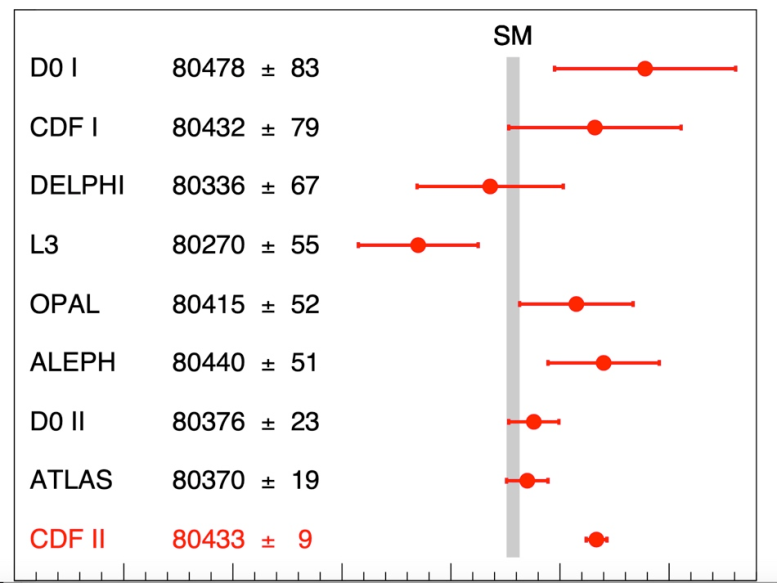
The mass of a W boson is about 80 times the mass of a proton, or approximately 80,000 MeV/c2. Scientists of the Collider Detector at Fermilab collaboration have achieved the world’s most precise measurement. The CDF value has a precision of 0.01 percent and is in agreement with many W boson mass measurements. It shows tension with the value expected based on the Standard Model of particle physics. The horizontal bars indicate the uncertainty of the measurements achieved by various experiments. The LHCb result was published after this paper was submitted and is 80354+- 32 MeV/c2. Credit: CDF collaboration
“Many collider experiments have produced measurements of the W boson mass over the last 40 years,” said CDF co-spokesperson Giorgio Chiarelli, Italian National Institute for Nuclear Physics (INFN-Pisa). “These are challenging, complicated measurements, and they have achieved ever more precision. It took us many years to go through all the details and the needed checks. It is our most robust measurement to date, and the discrepancy between the measured and expected values persists.”
The collaboration also compared their result to the best value expected for the W boson mass using the Standard Model, which is 80,357 ± 6 MeV/c2. This value is based on complex Standard Model calculations that intricately link the mass of the W boson to the measurements of the masses of two other particles: the top quark, discovered at the Tevatron collider at Fermilab in 1995, and the Higgs boson, discovered at the Large Hadron Collider at CERN in 2012.
CDF co-spokesperson David Toback, Texas A&M University, stated the result is an important contribution to testing the accuracy of the Standard Model. “It’s now up to the theoretical physics community and other experiments to follow up on this and shed light on this mystery,” he added. “If the difference between the experimental and expected value is due to some kind of new particle or subatomic interaction, which is one of the possibilities, there’s a good chance it’s something that could be discovered in future experiments.”
Reference: “High-precision measurement of the W boson mass with the CDF II detector” by CDF Collaboration, T. Aaltonen, S. Amerio, D. Amidei, A. Anastassov, A. Annovi, J. Antos, G. Apollinari, J. A. Appel, T. Arisawa, A. Artikov, J. Asaadi, W. Ashmanskas, B. Auerbach, A. Aurisano, F. Azfar, W. Badgett, T. Bae, A. Barbaro-Galtieri, V. E. Barnes, B. A. Barnett, P. Barria, P. Bartos, M. Bauce, F. Bedeschi, S. Behari, G. Bellettini, J. Bellinger, D. Benjamin, A. Beretvas, A. Bhatti, K. R. Bland, B. Blumenfeld, A. Bocci, A. Bodek, D. Bortoletto, J. Boudreau, A. Boveia, L. Brigliadori, C. Bromberg, E. Brucken, J. Budagov, H. S. Budd, K. Burkett, G. Busetto, P. Bussey, P. Butti, A. Buzatu, A. Calamba, S. Camarda, M. Campanelli, B. Carls, D. Carlsmith, R. Carosi, S. Carrillo, B. Casal, M. Casarsa, A. Castro, P. Catastini, D. Cauz, V. Cavaliere, A. Cerri, L. Cerrito, Y. C. Chen, M. Chertok, G. Chiarelli, G. Chlachidze, K. Cho, D. Chokheli, A. Clark, C. Clarke, M. E. Convery, J. Conway, M. Corbo, M. Cordelli, C. A. Cox, D. J. Cox, M. Cremonesi, D. Cruz, J. Cuevas, R. Culbertson, N. d’Ascenzo, M. Datta, P. de Barbaro, L. Demortier, M. Deninno, M. D’Errico, F. Devoto, A. Di Canto, B. Di Ruzza, J. R. Dittmann, S. Donati, M. D’Onofrio, M. Dorigo, A. Driutti, K. Ebina, R. Edgar, A. Elagin, R. Erbacher, S. Errede, B. Esham, S. Farrington, J. P. Fernández Ramos, R. Field, G. Flanagan, R. Forrest, M. Franklin, J. C. Freeman, H. Frisch, Y. Funakoshi, C. Galloni, A. F. Garfinkel, P. Garosi, H. Gerberich, E. Gerchtein, S. Giagu, V. Giakoumopoulou, K. Gibson, C. M. Ginsburg, N. Giokaris, P. Giromini, V. Glagolev, D. Glenzinski, M. Gold, D. Goldin, A. Golossanov, G. Gomez, G. Gomez-Ceballos, M. Goncharov, O. González López, I. Gorelov, A. T. Goshaw, K. Goulianos, E. Gramellini, C. Grosso-Pilcher, J. Guimaraes da Costa, S. R. Hahn, J. Y. Han, F. Happacher, K. Hara, M. Hare, R. F. Harr, T. Harrington-Taber, K. Hatakeyama, C. Hays, J. Heinrich, M. Herndon, A. Hocker, Z. Hong, W. Hopkins, S. Hou, R. E. Hughes, U. Husemann, M. Hussein, J. Huston, G. Introzzi, M. Iori, A. Ivanov, E. James, D. Jang, B. Jayatilaka, E. J. Jeon, S. Jindariani, M. Jones … P. Wagner, R. Wallny, S. M. Wang, D. Waters, W. C. Wester, D. Whiteson, A. B. Wicklund, S. Wilbur, H. H. Williams, J. S. Wilson, P. Wilson, B. L. Winer, P. Wittich, S. Wolbers, H. Wolfmeister, T. Wright, X. Wu, Z. Wu, K. Yamamoto, D. Yamato, T. Yang, U. K. Yang, Y. C. Yang, W.-M. Yao, G. P. Yeh, K. Yi, J. Yoh, K. Yorita, T. Yoshida, G. B. Yu, I. Yu, A. M. Zanetti, Y. Zeng, C. Zhou and S. Zucchelli, 7 April 2022, Science.
DOI: 10.1126/science.abk1781
The CDF collaboration comprises 400 scientists at 54 institutions in 23 countries.


